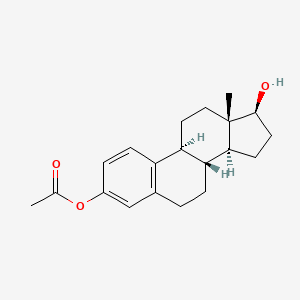Drug
D0913 | estradiol acetate
| Toxicity | Dose | Time | Species | Model | Method | Action | Positive criterion | Reference |
|---|---|---|---|---|---|---|---|---|
| MEMBRANE POTENTIAL | 9.08±0.59 | human | qHTS-HepG2 | MMP assay | decrease | IC50 | 163 | |
| MEMBRANE POTENTIAL | 17.34 | human | HepG2 | MMP assay | decrease | IC50 | 163 | |
| MEMBRANE POTENTIAL | rat | hepatocytes | MMP assay | Negative | IC50 | 163 | ||
| MEMBRANE POTENTIAL | > 200 µM | 30 mins | mouse | liver mitochondria | Rh123 fluorescence (excitation 485 nm, emission 535 nm) are recorded using a fluorescence multi-well plate reader (mCICCP (20 µM) treatments was considered as the 100% baseline for ΔΨm loss) | decrease | EC20 | 36 |
| RESPIRATION | > 200 µM | 60 mins | mouse | liver mitochondria | Oxygen consumption was monitored with 50nM MitoXpress ( an oxygen-sensitive phosphorescent dye) using a spectrofluorimeter (Tecan Infinite 200; λExcitation 380nm; λEmission 650nm). Rotenone (2µM) was used as 100% baseline for complex I inhibition. | decrease | EC20 | 36 |
| RESPIRATION | > 200 µM | 60 mins | mouse | liver mitochondria | Oxygen consumption was monitored with 50nM MitoXpress ( an oxygen-sensitive phosphorescent dye) using a spectrofluorimeter (Tecan Infinite 200; λExcitation 380nm; λEmission 650nm). Oligomycin A (1µM) was used as 100% baseline for complex II inhibition. | decrease | EC20 | 36 |
| SWELLING | ND | 30 mins | mouse | liver mitochondria | swelling assay: Absorbance at 545 nm using a fluorescence multi-well plate reader (CaCl2 (50 µM) was considered as the 100% baseline for the swelling ) | Negative | EC20 | 36 |
| Target | Dose | Time | Species | Model | Method | Action | Positive criterion | Reference |
|---|---|---|---|---|---|---|---|---|
| NADH:ubiquinone reductase | > 200 µM | 60 mins | mouse | liver mitochondria | Oxygen consumption was monitored with 50nM MitoXpress ( an oxygen-sensitive phosphorescent dye) using a spectrofluorimeter (Tecan Infinite 200; λExcitation 380nm; λEmission 650nm). Rotenone (2µM) was used as 100% baseline for complex I inhibition. | inhibit | EC20 | 36 |
| Succinate dehydrogenase | > 200 µM | 60 mins | mouse | liver mitochondria | Oxygen consumption was monitored with 50nM MitoXpress ( an oxygen-sensitive phosphorescent dye) using a spectrofluorimeter (Tecan Infinite 200; λExcitation 380nm; λEmission 650nm). Oligomycin A (1µM) was used as 100% baseline for complex II inhibition. | inhibit | EC20 | 36 |
| Cytochrome c | > 200 µM | 30 mins | mouse | liver mitochondria | Cytochrome c release was evaluated using ELISA kit ( 20 µg/ml Alamethicin was used as 100% baseline) | release | EC20 | 36 |
| Pictogram | Signal | Statements | Precautionary Statement Codes |
|---|---|---|---|
 |
Danger |
Aggregated GHS information provided by 26 companies from 3 notifications to the ECHA C&L Inventory. Each notification may be associated with multiple companies. H351 (96.15%): Suspected of causing cancer [Warning Carcinogenicity] H360 (96.15%): May damage fertility or the unborn child [Danger Reproductive toxicity] H362 (96.15%): May cause harm to breast-fed children [Reproductive toxicity, effects on or via lactation] Information may vary between notifications depending on impurities, additives, and other factors. The percentage value in parenthesis indicates the notified classification ratio from companies that provide hazard codes. Only hazard codes with percentage values above 10% are shown. |
P201, P202, P260, P263, P264, P270, P281, P308+P313, P405, and P501; (The corresponding statement to each P-code can be found at the GHS Classification page.) |
| 17-beta-Estradiol-acetate | 17beta-Estradiol 3-acetate | 17beta-Hydroxy-3-acetoxyestra-1,3,5(10)-triene |
| 17beta-Hydroxyestra-1,3,5(10)-trien-3-yl acetate | 3-(Acetyloxy)estra-1,3,5(10)-trien-17.beta.-ol | 3-Acetoxy-oestra-1,3,5(10)-trien-17beta-ol |
| 3-Acetoxyestra-1,3,5(10)-trien-17beta-ol | 3-O-Acetylestradiol | 4245-41-4 |
| 5R97F5H93P | CAS-4245-41-4 | CHEBI:135981 |
| CHEMBL1200430 | D04061 | DB13952 |
| DSSTox_CID_25867 | DSSTox_GSID_45867 | DSSTox_RID_81186 |
| DTXSID7045867 | E 3A | E3A |
| Estra-1,3,5(10)-triene-3,17-diol, (17 beta)-, 3-acetate; | Estra-1,3,5(10)-triene-3,17-diol, (17beta)-, 3-acetate | Estra-1,3,5(10)-triene-3,17beta-diyl 3-acetate |
| Estradiol 3-acetate | Estradiol acetate | Estradiol acetate (USAN) |
| Estradiol acetate [USAN] | Estradiol, 3-acetate | Estradiol-3-acetate |
| FHXBMXJMKMWVRG-SLHNCBLASA-N | Femring | Femring (TN) |
| Femtrace | Menoring | NCGC00249885-01 |
| Q27262772 | SCHEMBL148561 | Tox21_111359 |
| Tox21_113661 | UNII-5R97F5H93P | beta-Estradiol 3-acetate |
| DrugBank Name | estradiol acetate |
| DrugBank | DB13952 |
| CAS Number | 4245-41-4 |
| PubChem Compound | 9818306 |
| KEGG Drug | D04061 |
| ChEBI | 135981 |

